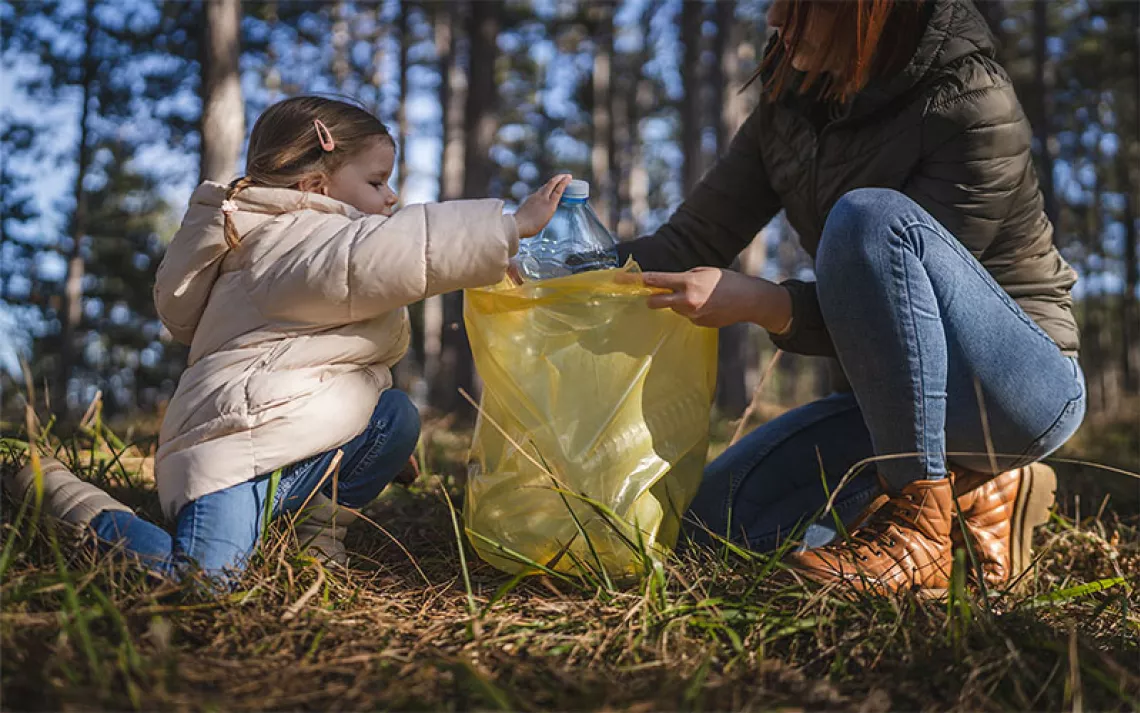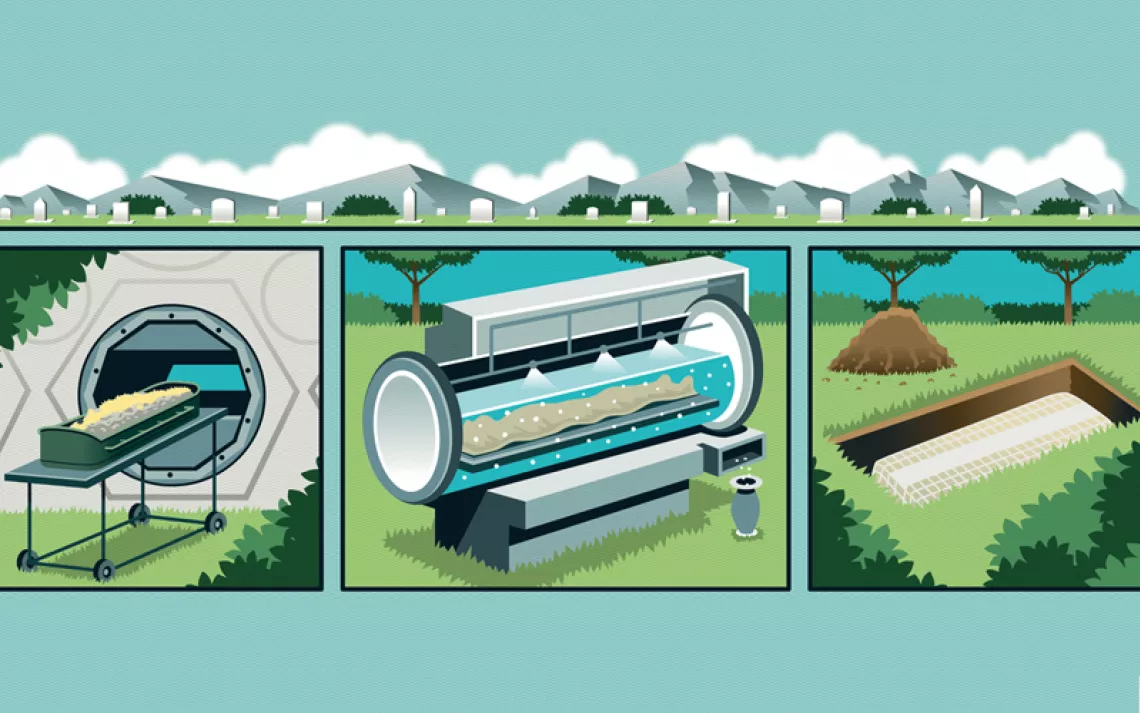Is Cellophane Better Than Plastic?
Mr. Green unwraps an unlikely answer

Illustration by Little Friends of Printmaking
Q: Hey Mr. Green! I have seen cellophane used as food wrappers and containers for years. What to do with it? Can it be recycled? Is cellophane more ecofriendly than plastic wrap and plastic bags?
—Janice in Albuquerque, New Mexico
A: Cellophane is derived from natural sources such as wood, while plastic wrap is made from oil. Unlike plastic, cellophane can't be recycled, but it is biodegradable, so it can be composted or sent to a landfill in the regular garbage.
That doesn't mean it's ecofriendly. In addition to using wood as a raw material, cellophane production requires toxic carbon disulfide. Also, cellophane could end up releasing methane, a powerful global-warming gas, if lodged in a landfill that lacks a methane recovery system.
So it's not easy to pick a winner in this dreary packaging duel, especially when we toss out such a staggering amount of plastic bags and wraps instead of recycling them. (Most recyclers don't want this plastic mixed in with the rigid kind because it strangles their sorting machinery.) Only about 12 percent of all U.S. plastic bags and plastic-wrap packaging is recycled, which means that millions of tons are simply thrown away or incinerated. The consumption rate of plastic is hundreds of times that of cellophane, and the sheer volume of waste is overwhelming. The World Economic Forum has predicted that if we don't stop chucking so much, plastic will outweigh fish in the oceans by 2050.
 The Magazine of The Sierra Club
The Magazine of The Sierra Club



